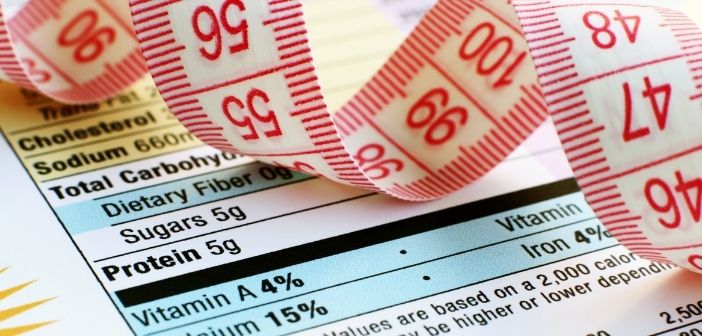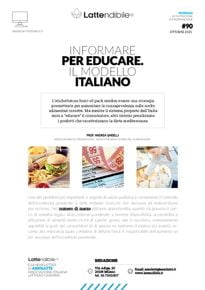L’etichettatura Front-of-Pack
Dobbiamo distinguere ciò che è gradito al consumatore da ciò che è utile alla salute del consumatore: le due cose non sempre coincidono, o forse quasi mai.
Scarica il numero di Ottobre 2021 de Lattendibile
L’OMS suggerisce di favorire politiche e azioni che promuovano la disponibilità e l’accessibilità di alimenti a ridotto contenuto di grassi, per esempio [12], e questo spinge l’industria alla riformulazione dei suoi prodotti. Avere la disponibilità di prodotti a minore contenuto di grassi (ma lo stesso può valere per sale o zucchero) è certamente un vantaggio per il consumatore, a patto però che non sia a conoscenza della riformulazione.
Ma questo è ovviamente impossibile, perché un produttore che si impegna in un costoso processo di riformulazione vorrà certamente comunicarlo al consumatore. Sono ormai molteplici le evidenze in letteratura su come gli alimenti light, healthy, con claims salutistici possano favorire l’iperconsumo [13-16].
Un “claim” in etichetta incontra il gradimento di tutti, dai consumatori, ai produttori, ai governi e viene vista in maniera benevola persino dall’Organizzazione Mondiale della Sanità, che di fatto incoraggia l’industria alimentare alla riformulazione dei prodotti. Il consumatore gradisce la facile soluzione di alimenti che ritiene “più sani” e da parte sua l’industria alimentare vede nella riformulazione una possibilità di aumentare il volume delle vendite, confidando che il consumatore sia attratto da vantaggi per la salute di alimenti “light”, “con 30% di grasso in meno”, o “senza zuccheri aggiunti” ecc.
Nutri-score e sistemi codificati dai colori
L’etichettatura Front-of-Pack è pertanto uno degli interventi che ha ricevuto e sta ricevendo notevole interesse e il dibattito sul sistema migliore è molto acceso (in figura 1 le principali proposte [17]). Tra queste, come si può vedere, il Nutri-score è il sistema che ha ricevuto il più alto numero di adesioni.
È un sistema sviluppato in Francia basato sui colori e rappresenta una evoluzione del traffic-light proposto qualche anno fa dalla Food Standard Agency britannica, che unisce il concetto di profilo nutrizionale e di semaforo [18]. Questo sistema nelle intenzioni degli autori dovrebbe aiutare il consumatore a confrontare prodotti dello stesso gruppo, per effettuare scelte migliori.
In pratica si tratta di un sistema a cinque colori che valuta gli aspetti negativi (calorie, grassi saturi, zucchero e sale) e positivi (fibra, frutta fresca e secca e verdura e, inspiegabilmente, proteine) di un prodotto e li trasforma in un numero corrispondente ad una lettera e un colore: lettera A, verde intenso, lettera E, rosso scuro, connotando in questo modo la migliore (verde) o peggiore (rossa) qualità nutrizionale [19]. (vedi figura 1).
Per il DOWNLOAD DELLE FIGURE clicca qui
Autore: PROF. ANDREA GHISELLI, Medico Internista, Presidente SISA – Società Italiana di Scienze dell’Alimentazione
Bibliografia
- WHO, Global NCD Action Plan 2013-2020, W.H. Organization, Editor. 2013.
- Cook, R.M. and B.J. Cockrell, Predator ingestion rate and its bearing on feeding time and the theory of optimal diets. Journal of Animal Ecology, 1978. 47: p. 529-547.
- Singh, M., Mood, food, and obesity. Front Psychol, 2014. 5: p. 925.
- Hoch, S.J. and G.F. Loewenstein, Time-inconsistent Preferences and Consumer Self-Control. Journal of Consumer Research, 1991. 17(4): p. 492-507.
- Wagenaar, A.C., M.J. Salois, and K.A. Komro, Effects of beverage alcohol price and tax levels on drinking: a meta-analysis of 1003 estimates from 112 studies. Addiction, 2009. 104(2): p. 179- 90.
- Backholer, K., et al., The impact of a tax on sugar-sweetened beverages according to socio- economic position: a systematic review of the evidence. Public Health Nutr, 2016. 19(17): p. 3070-3084.
- Colchero, M.A., et al., Beverage purchases from stores in Mexico under the excise tax on sugar sweetened beverages: observa- tional study. BMJ, 2016. 352: p. h6704.
- Chambers, S.A., et al., Reducing the volume, exposure and nega- tive impacts of advertising for foods high in fat, sugar and salt to children: A systematic review of the evidence from statutory and self-regulatory actions and educational measures. Prev Med, 2015. 75: p. 32-43.
- Slapø, H., et al., Efficiency of In- Store Interventions to Impact Customers to Purchase Healthier Food and Beverage Products in Real-Life Grocery Stores: A Systematic Review and Meta- Analysis. Foods, 2021. 10(5).
- Wijayaratne, S.P., et al., Food literacy, healthy eating barriers and household diet. European Journal of Marketing, 2018. 52 (12): p. 2449-2477.
- Crockett, R.A., et al., Nutritional labelling for healthier food or non-alcoholic drink purchasing and consumption. Cochrane Database Syst Rev, 2018. 2(2): p. Cd009315.
- Obesity, W.H.O.C.o. and O. World Health, Obesity : prevent- ing and managing the global epidemic : report of a WHO consultation. 2000, World Health Organization: Geneva.
- Geyskens, K., et al., The Back- door to Overconsumption: The Effect of Associating “Low-Fat” Food with Health References. Journal of Public Policy & Mar- keting, 2007. 26(1): p. 118-125.
- Oostenbach, L.H., et al., Systematic review of the impact of nutrition claims related to fat, sugar and energy content on food choices and energy intake. BMC Public Health, 2019. 19(1): p. 1296.
- Wansink, B. and P. Chandon, Can “Low-Fat” Nutrition Labels Lead to Obesity? Journal of Marketing Research, 2006. 43(4): p. 605- 617.
- Cleeren, K., et al., Regular or low-fat? An investigation of the long-run impact of the first low-fat purchase on subsequent pur- chase volumes and calories. International Journal of Research in Marketing, 2016. 33 (4): p. 896-906.
- Delhomme, V., Front-of-pack nutrition labelling in the European Union: a behav- ioural, legal and political analysis. European Journal of Risk Regulation, 2021: p. 1-24.
- Shrivastava, S.R., P.S. Shrivastava, and J. Ramasamy, Adoption of the Nutri-score system in France to reduce the incidence of noncommunicable diseases. J Res Med Sci, 2017. 22: p. 111.
- Julia, C. and S. Hercberg. Nutri-Score: Evi- dence of the effectiveness of the French front-of-pack nutrition label. 2018.
- Fan, M. and Y. Jin, Obesity and Self-Control: Food Consumption, Physical Activity and Weight-Loss Intention. Applied Economic Perspectives and Policy,, 2014. 36(1): p. 125 -145.
- Leahey, T.M., et al., A preliminary investiga- tion of the role of self-control in behavioral weight loss treatment. Obesity research & clinical practice, 2014. 8(2): p. e149-e153.
- Schuldt, J.P., Does green mean healthy? Nutrition label color affects perceptions of healthfulness. Health Commun, 2013. 28(8): p. 814-21.
- LARN, Livelli di Assunzione di Riferimento di Nutrienti ed Energia per la popolazione italiana. IV Revisione – Standard quantitativi delle porzioni, ed. SIC. 2014, Milano: SINU.
- Mazzu, M.F., et al., A cross-country experi- mental study on consumers’ subjective un- derstanding and liking on front-of-pack nutri- tion labels. Int J Food Sci Nutr, 2021: p. 1-15.
- Mazzu, M.F., S. Romani, and A. Gambicorti, Effects on consumers’ subjective under- standing of a new front-of-pack nutritional label: a study on Italian consumers. Int J Food Sci Nutr, 2021. 72(3): p. 357-366.
- Capacci, S., et al., Policies to promote healthy eating in Europe: a structured re- view of policies and their effectiveness. Nutr Rev, 2012. 70(3): p. 188-200.
Scarica il numero di Ottobre 2021 de Lattendibile
L’etichettatura front-of-pack sembra essere una strategia promettente per aumentare la consapevolezza sulle scelte alimentari corrette. Ma mentre il sistema proposto dall’Italia mira a “educare” il consumatore, altri sistemi penalizzano i prodotti che caratterizzano la dieta mediterranea.

Informare per educare: il modello italiano

L’etichettatura Front-of-Pack




